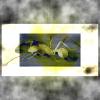Thought this was reasonably interesting, with some interesting other bits.
"Ants learn fast and do not forget: associative olfactory learning, memory and extinction in Formica fusca"
https://royalsociety...098/rsos.190778
Some interesting highlights:
"Our study is original in that it shows both single-trial olfactory learning and the formation of a highly stable memory form after this single learning."
"Leaf-cutting ants, Atta colombica, feed their symbiotic fungus with freshly collected leaves. Field colonies learn to avoid plants that are dangerous for their fungus"
"Young workers of Formica polyctena that were reared just after emergence with cocoons of an alien species for 15 days will take care of cocoons of this species when encountering them six months later, while they will eat conspecific cocoons that they never encountered [44]. This is an imprinting-like phenomenon occurring during a critical period after emergence"














